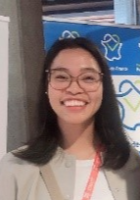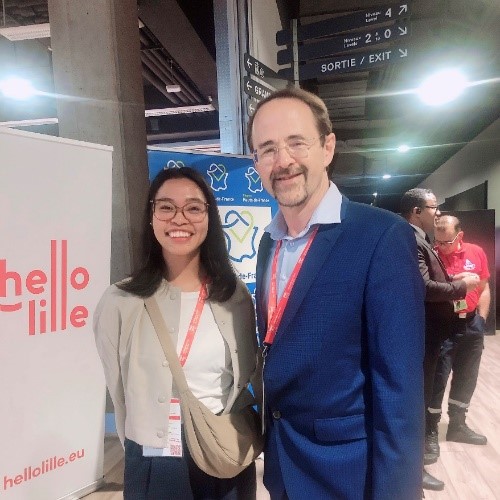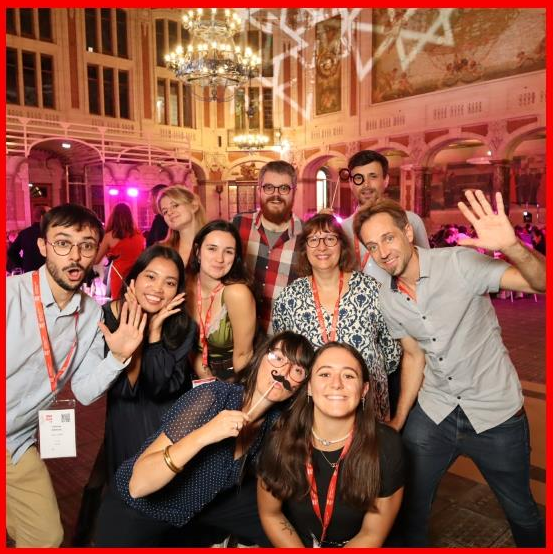
Angelique Sanchez DAFUN
Research engineer
IPBS - Toulouse
With the kind assistance of FPS, I was able to attend the SMAP 2024 meeting a few weeks ago in the lovely city of Lille. The conference featured plenary and keynote talks and concurrent sessions covering a wide range of mass spectrometry (MS)-related topics such as advances in instruments and methodologies, bioinformatics, and practical applications in fields like health and biological sciences, forensics and cultural heritage, and polymers and microplastics, etc. Unfortunately, due to the tight schedule, it was not possible to attend every session. Nevertheless, below is a summary of the two sessions that I think were the most fascinating.
Instrumental Development
 |
The conference kicked off with the plenary talk of Alexander Makarov on the ‘frontiers of high-resolution accurate mass analysis’. Makarov, who is the current Director of Global Research for Life Sciences Mass Spectrometry at Thermo Fisher Scientific, pioneered the work on the creation of Orbitrap mass analyzer and led the development of the Asymmetric Track Lossless (Astral) analyzer. In his talk, he described the long road to the success of these analyzers-from the ocean of failed ideas, technical disasters and commercial failures into the land of real-life applications. First released in 2005, Orbitrap technology is based on the separation of ions in an oscillating electric field. With the combination of external pulsed ion source, electrodynamic squeezing, orbital trapping, and image current detection, it offers a > 100,000 mass resolution in its compact design, providing high versatility and efficiency for complex samples. Makarov and his team continued their quest on converging the benefits of Orbitrap and Time-of-Flight analyzers and this resulted in Orbitrap Astral mass spectrometer, which was launched last year. The Astral technology, which combines ion processor, injection optics, multi-reflection asymmetric mirrors and high dynamic range pulsed detection, offers the combination of high throughput and high performance with 200 spectra per second. Orbitrap Astral instrument is expected to break barriers on different fields like the proteomics arena. This new technology will surely help realize the promise of proteomics, especially in the single-cell era.
Ions passing through the mass spectrometer are somewhat being dump at the end; however, Stephan Rauschenbach, an Associate Professor in Physical Chemistry at the University of Oxford, aimed to capture these ions for molecular imaging. With his keynote presentation during the third day of the conference, he presented his prototype instrument based on soft-landing electrospray ion beam deposition. The workflow combines native MS with Q-Exactive UHMR Orbitrap MS instrument and cryo-Electron Microscopy for structural determination. After spraying the protein solution with native electrospray ionization, the intact ions of species of interest are filtered and deposited into a cold transmission electron microscopy grids at low energy. The grid is then transferred in-situ for atomic resolution molecular imaging. Examples were shown on its success in imaging proteins, peptides, glycans, etc. This instrument can prove the common assumption that the structure of proteins in solution remains the same inside the mass spectrometer.
Top-down and Structural Analysis
Sarah Cianferani, the research director at the CNRS and co-heads of the BioOrganic Mass Spectrometry Laboratory in Strasbourg, gave an inspiring and engaging plenary talk with her ‘journey into structural MS methods: from science fiction to routine biotherapeutics’ characterization’. Her talk focused on the different method developments she contributed in structural MS field (mainly native MS, ion mobility MS, Hydrogen deuterium exchange MS, and cross-linking MS) and their applications for multiprotein complexes, membrane proteins, and antibodies. She addressed the different analytical challenges in the usual structural MS protocols. A great example is the issue on sample preparation for native MS. As a user of this technique, it is true that there are usually difficulties on manual buffer exchange and desalting process as a significant amount of the sample is lost along the process. However, the automation of this process using an online chromatography step made it faster and more efficient. The use of different types of chromatography (e.g. size exclusion, hydrophobic interaction, and ion exchange) was also shown to characterize mixtures of complexes (e.g. antibodies) of different properties in native MS. In addition, Cianferani emphasized the need for computational tools in order to build 3D structures from MS data as labeling methods and chemical cross-linking MS have the potential. At the end of her talk, she also encouraged the audience not to be afraid in trying to develop innovative methodologies to combat some difficulties.
Evolène Deslignière, a Post-doctoral researcher at Utrecht University, also presented a comparison of single-ion Orbitrap-based charge detection MS and mass photometry in analyzing intact high mass capped mRNAs. The former method in native conditions gave an unstable ion behavior but gave better signal to noise ratio in denaturing conditions. The latter method gave better results, allowing the measurement with high accuracy and revealing low amounts of fragments and dimers that can be missed with the other method. Megan Gant, a research engineer at Institut Pasteur, also gave an enthusiastic presentation on her study of tubulin proteoforms with top-down MS. Using several fragmentation techniques, she was able to detect the intact masses of a wide variety of tubulin proteoforms, and mapped their post-translational modifications including those with polyglutamylation and C-teminal detyrosination. During this session, I was also given the opportunity to present my PhD work on deciphering proteasome regulation with the use of structural MS and mass photometry. I described the preferential interactions between specific proteasome-regulator pairs (i.e. 20S-PA28) and the possibility of inhibiting these interactions as new therapeutic target.
‘Mass spectrometry exists to fight complexity.’ As the community aims for analyzing more and more difficult samples with high throughput and accuracy, instrumental, methodological and bioinformatic innovations are truly significant. Personally, the SMAP 2024 congress broadened my understanding across several disciplines. It also gave me fresh insights and made it possible for me to build new networks within the community. Finally, it gave me a chance to explore Lille's beauty, which is roughly 500 miles away from my lab in Toulouse. With its mesmerizing alleys, stunning architecture, and delicious food (moules-frites, maroilles, welsh, carbonade flamande and gaufre), Lille is a surprise. Definitely a wonderful experience! Thank you for the generosity, FPS!
 |

